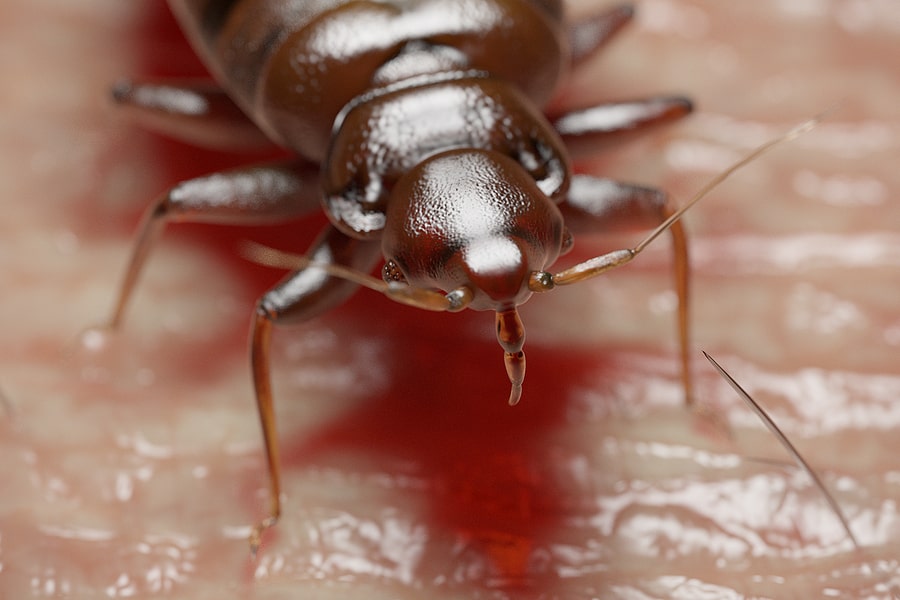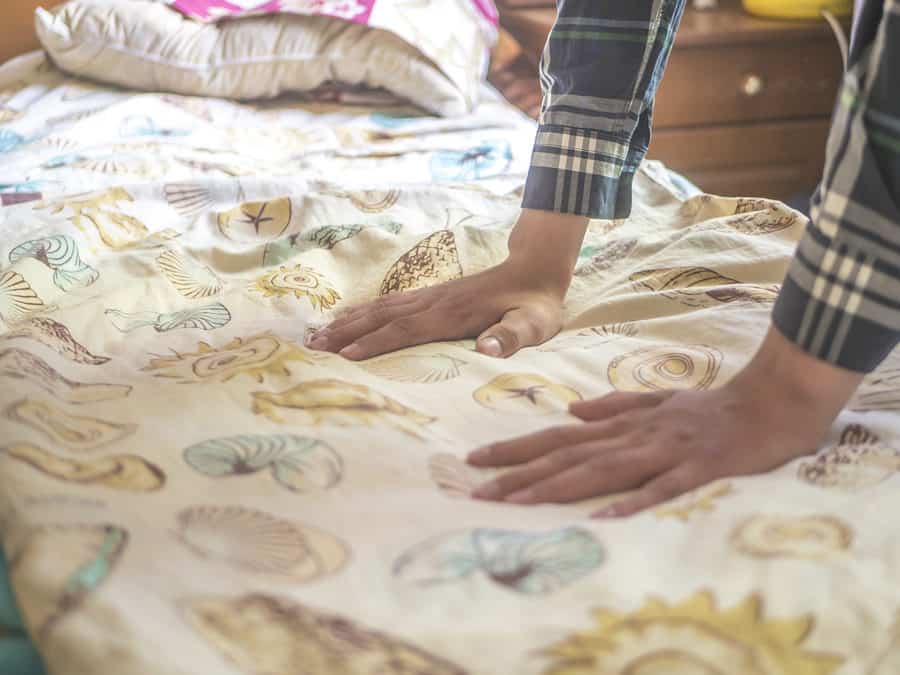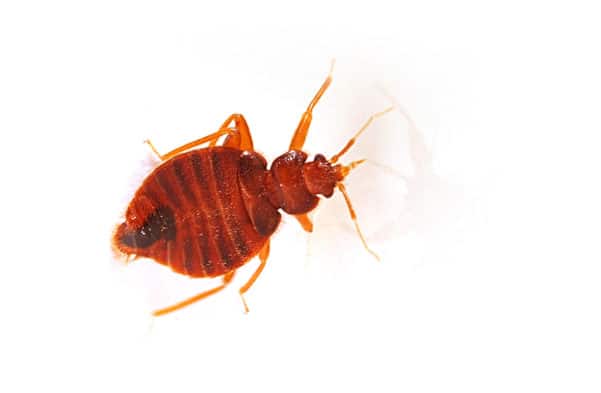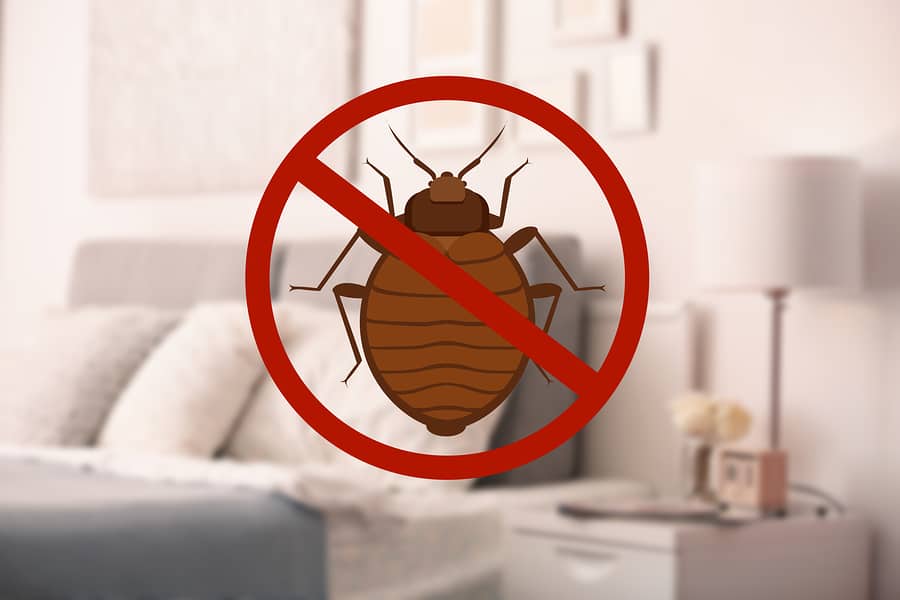READY TO GET STARTED?
REQUEST A FREE ESTIMATE
Fill out the form below or call (888) 466-7849 for a free, no-obligation estimate.

Traveling can be stressful. The last thing anyone wants to deal with on top of the routine stress of traveling is bed bugs. These pests are notorious hitchhikers and often catch rides with travelers on their luggage to move from place to place. How can you eliminate the potential for bed bugs while traveling? Here is our traveler’s guide to bed bugs to help make your trip as smooth and bed bug free as possible.
Properly identifying bed bugs is the first step to preventing an infestation. There are other common bugs that are often mistaken for bed bugs like carpet beetles, spider beetles, bat bugs, booklice, and fleas. Bed bugs are small, about 3/16″ to 1/4″ in length (about the size of an apple seed). If they have not fed recently, they are long and brown with a flat, oval-shaped body. If they have recently had a meal, they will be balloon-like and elongated with a reddish-brown color. They are “true bugs” with a 3-segmented beak, antenna with 4 parts, wings that aren’t used for flying, and short, golden-colored hairs. They also have an odor which is often described as sweetish or musty. Bed bug nymphs are smaller, translucent, and whitish-yellow in color. Bed bug eggs are tiny, about the size of a pinhead and are pearl white in color.
The next step in bed bug prevention is recognizing the signs of the presence of bed bugs. You should look for signs of bed bugs any time you are cleaning, changing bed linens, or inspecting the area where you are staying on a trip. Signs of bed bugs include rusty, reddish-brown stains on the bed sheets or mattress that happen when bed bugs are crushed; dark spots about the size of a period that are bed bug excrement that bleeds onto bed linens; eggs and eggshells that are tiny (about 1 mm in size); pale yellow skins that are shed by the nymphs; and live bed bugs. Any of these signs indicate the presence of bed bugs.
Bed bugs are tiny pests that can fit into a crack or crevice the size of a credit card. Knowing where bed bugs can hide is the next step to avoiding them. When checking for bed bugs, thoroughly inspect the piping, seams, and tags of mattresses and box springs; cracks in the bed frame and headboard; seams of chairs and couches; between cushions; in the folds of curtains; in drawer joints; in electrical receptacles and appliances; under loose wallpaper and wall hangings; where the wall and the ceiling meet; along baseboard seams and cracks; and in the head of screws.
Knowing how bed bugs act is essential to finding, eliminating, and preventing them. Bed bugs prefer to feed on humans but will also feed on other mammals and even birds. They will travel anywhere from 5 to 20 feet from their hiding spots to feed on a host. They are primarily nocturnal but will seek a host during daylight in larger infestations. They will feed on a host anywhere from 3 to 12 minutes. Bed bugs need at least 1 blood meal to be able to develop into the next stage of their life cycle. In order to continue to mate and produce eggs, both male and female bed bugs must feed at least once every 14 days. Females lay anywhere from 1 to 3 eggs per day and 200 to 500 eggs in their lifetime. They can survive temperatures as low as 46 degrees Fahrenheit but will die when their body temperature reaches 113 degrees Fahrenheit; hence the use of heat in bed bug treatments. Bed bugs can be found anywhere their hosts can be found.
Now that you know what bed bugs look like, where to find them, and how they act, the final step is how to prevent them. This is especially important when you are traveling. The first step is to check the bed bug registry to make sure the place you are staying doesn’t have any recently reported cases of bed bugs. Anytime you are staying outside your home, inspect the room where you are staying thoroughly for the presence of bed bugs. Use a flashlight and pull the sheet back to get a closer look. Inspect all of the areas listed above where bed bugs can hide. Use luggage racks to store your suitcases and bags and try to avoid putting them on the bed or the floor. Keep your belongings stored separately from those of the others you may be staying with. Consider storing your luggage in trash bags or protective coverings during your stay. If you find signs of bed bugs where you are staying, request to change rooms. If you must change rooms, do not move into a room that is adjacent to or directly above or below the infested room. When you return home from your trip, unpack your luggage directly into your washing machine and wash and dry everything on high heat. Inspect your luggage for bed bugs and use a vacuum or hand steamer to clean it before storing it. Keep luggage stored away from your bedroom, possibly in the basement or garage. Never store luggage under your bed.
With this traveler’s guide to bed bugs you will be well equipped for your next trip. If you suspect you have a bed bug infestation, contact a professional pest control company who can provide a thorough inspection and bed bug control service.
What You Should Know About Flies!
The Essentials of Crawlspace Moisture Barriers
I’ve Taken Precautions, But I’m Still Seeing Roaches!

This is the biggest time of year for travel! While remembering to pack the perfect outfit or the kids’ favorite game may be on the top of your growing to-do list, something you may not be thinking about is preventing a bed bug infestation from following you back home. This should move towards the top of the list, however, as a bed bug infestation is difficult to treat. Here are a few places where bed bugs are found:
Double checking your belongings when you arrive home can help prevent the establishment of a bed bug haven. Be sure to check out these other ways to prevent bed bugs. If you believe you have a bed bug infestation, it is imperative to call a professional bed bug control company immediately.

Bed bugs are an extremely difficult pest to get rid of. Is there a season that is worse for bed bugs than others? While there is no official bed bug season, a recent study published in the Journal of Medical Entomology shows a peak in bed bug activity in August and a low in February. Other studies have shown that peak season for bed bugs runs from June through October. Bed bugs appear more prevalent in warmer months likely due to an increase in travel and hotel visits during spring break and summer vacation, as well as college students moving into dorms at the beginning of the school year. More movement, more travel and more activity lead to an increased opportunity for bed bugs to hitch a ride on luggage, people and pets. This increase in travel also allows them the opportunity to spread very quickly, establishing new infestations practically overnight.
Bed bugs have been found in homes, college dorms, nursing homes, schools, hospitals, office buildings, hotels, daycares, hospitals, public transportation, and even planes.
Even though bed bug season appears to peak in the warmer months, they still remain active year round. That’s why it is important to be vigilant when traveling or hosting out of town visitors regardless of the time of year. Here are some tips to help prevent bed bugs from infesting your home.
If you suspect you have a bed bug infestation, contact a professional bed bug control company who can provide you with a thorough inspection and set you up with a comprehensive treatment and prevention plan going forward.
Stop Leaves at the Line of Scrimmage with Gutter Protection!
Are Termites Active In Fall and Winter?

Bed bugs are one of the most difficult pests to get rid of. Early detection is critical for bed bug control. A minor infestation can be an inconvenience but it is much less expensive and easier to treat than a widespread infestation. Minor infestations can be difficult to find and correctly diagnose, however. Other insects like carpet beetles are often mistaken for bed bugs. Misidentification or delay in detection can allow the bed bugs more time to spread and proliferate. How do you find bed bugs? Where can bed bugs hide?
The first step in finding bed bugs is properly identifying them. Adult bed bugs are brown or reddish-brown with flat, oval-shaped bodies that are about 1/4″ to 5/8″ long. Their flat body shape allows them to hide in cracks and crevices. Bed bugs become swollen and engorged after feeding. They are found throughout the United States.
Learning and understanding the habits and behavior of bed bugs can also help identify an infestation early. Bed bugs like to travel and are notoriously good hitchhikers. Bed bugs usually emerge at night in search of their blood meal but will feed during the day if necessary. While bed bugs are most commonly known for feeding on humans, they will also feed on other mammals and birds too. They usually hide near their food source.
Knowing and recognizing the signs of a bed bug infestation is key to identifying them early and getting rid of them quickly. Some common signs of bed bugs include:
Once you know the signs to look for, the next step is to thoroughly inspect any areas that could potentially harbor bed bugs. Bed bugs are found in every place humans gather including homes, hotels, schools, offices, stores, and public transportation. They like to use their flat shape to hide in cracks and crevices close to humans. They can fit in any opening the width of a credit card. When checking for bed bugs, use a flashlight and magnifying glass to thoroughly check the following areas:
Bed bugs can be extremely difficult to get rid of. If you spot signs of a bed bug infestation, contact a licensed pest control company who can positively identify the bed bugs and use professional grade techniques and products to eliminate the infestation. In the meantime, there are some things you can do to help prevent bed bugs in the first place.
How Dangerous Are Cockroaches?
How Long Does A Mosquito Treatment Last?
5 Ways to Get Rid of Millipedes

From college students making their way home for summer to little ones heading off to summer camp and family vacations, this is the time when bed bugs thrive and look to take over your home by any means necessary. Follow these tips to keep your home protected from from a bed bug invasion:
Bed bug infestations are no small concern as it takes a very intense treatment. If you return from traveling and find that you may have a bed bug infestation, call your licensed pest control company as soon as possible.